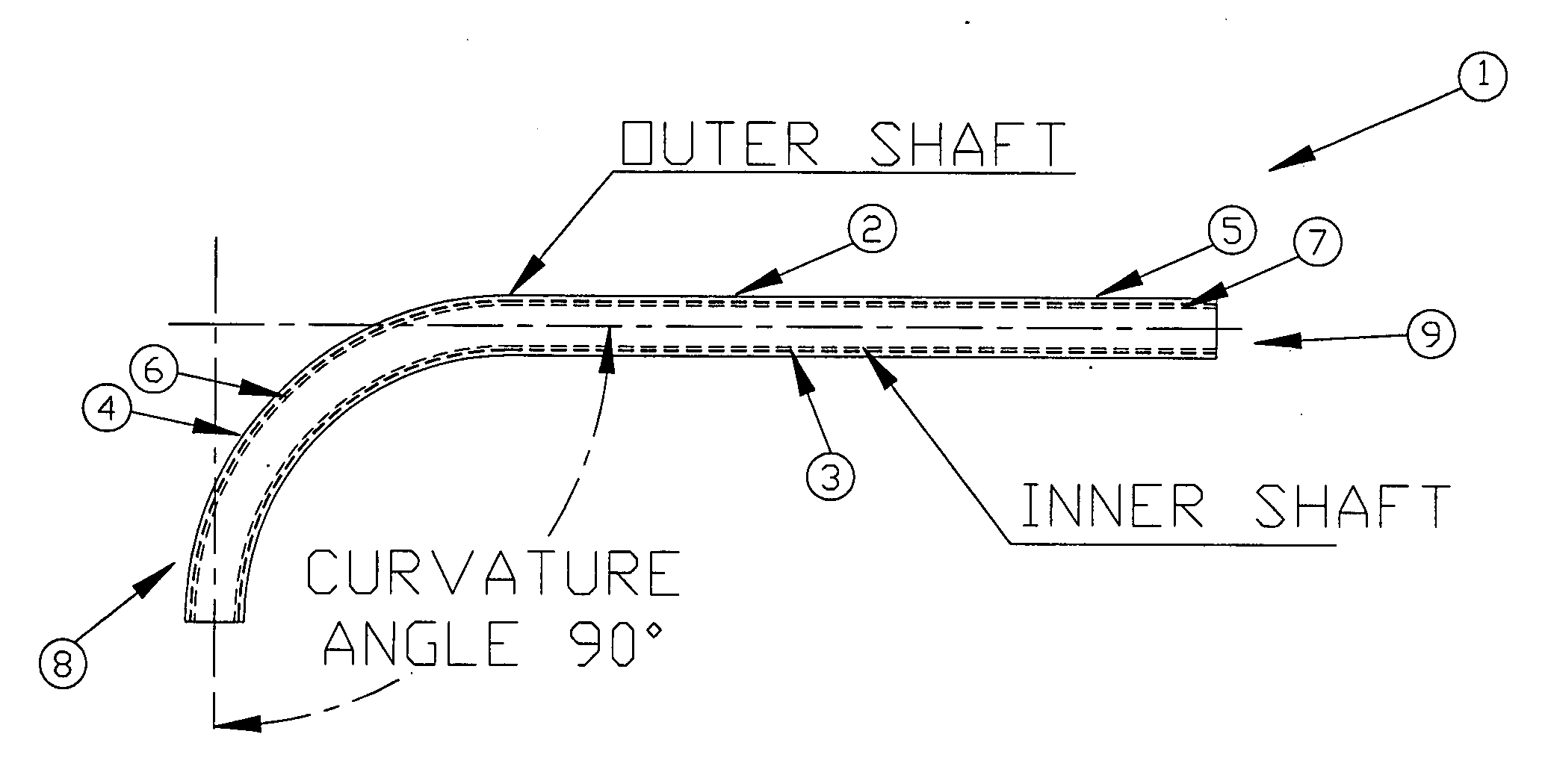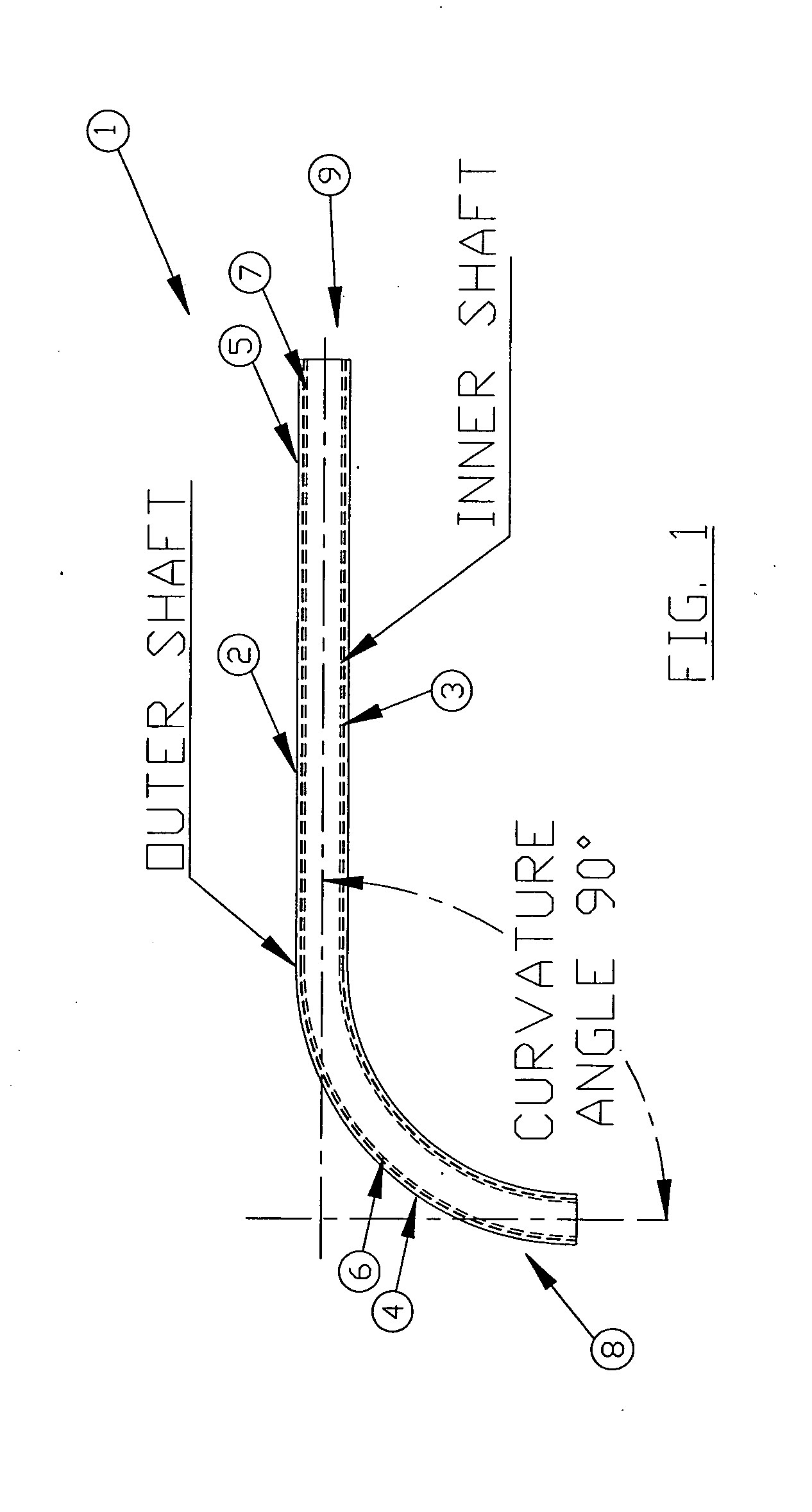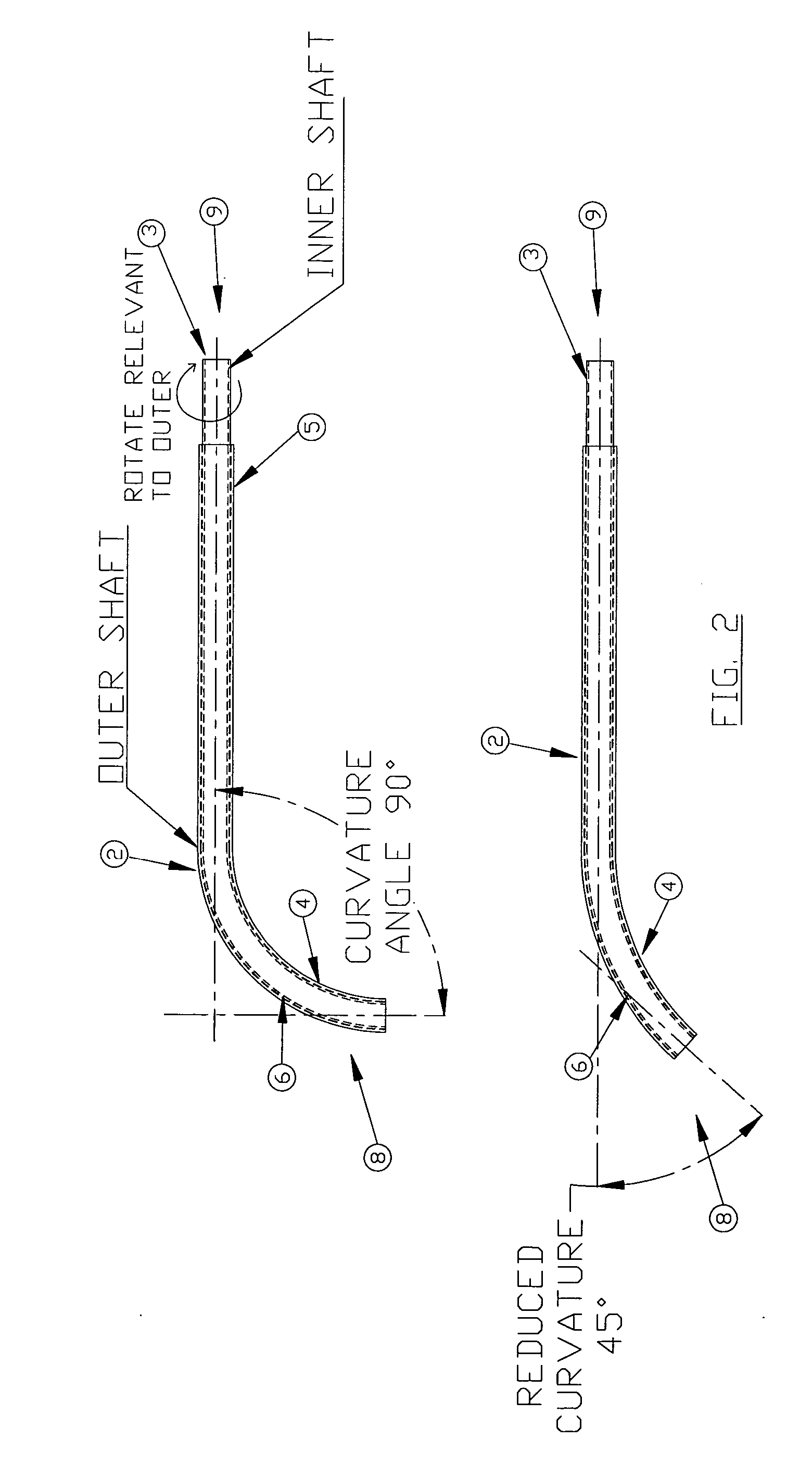Steerable catheter assembly
a technology of steering device and assembly, which is applied in the direction of catheter, etc., can solve the problems of increasing the manufacturing cost of the steering device, sacrificing many advantages of the prior art steerable device, and increasing the weight of the product, so as to achieve maximum flexibility, maximum flexibility, and minimum flexibility
- Summary
- Abstract
- Description
- Claims
- Application Information
AI Technical Summary
Benefits of technology
Problems solved by technology
Method used
Image
Examples
first embodiment
[0053] the steerable catheter assembly of the present invention is shown in FIGS. 1 and 2. The catheter assembly 1 comprises a stainless steel outer shaft 2, having a lumen extending therethrough and a stainless steel inner shaft 3, having a lumen extending therethrough. Each of the shafts is of thin-walled construction. In alternative embodiments, the shafts may be formed from other metals, or from suitable plastics. The inner shaft is coaxially disposed within the outer shaft.
[0054] The outer shaft 2 is formed with a bend (or curvature) of approximately 90 degrees at a distal portion 4. The bend or curvature may be formed, for example, by heat treatment of the shaft. In an ‘at rest’ or unstressed position, the outer shaft distal end 4 will be disposed at an angle of approximately 90 degrees to the proximal end 5 of the shaft. The bend or curvature is such that if the outer shaft is manually straightened, the shaft will automatically return to its unstressed position on release. Th...
second embodiment
[0060] the steerable catheter assembly of the present invention is shown in FIG. 9. The inner shaft 3 is formed with a curvature of approximately 90 degrees at a distal end 6. This curvature may be formed, for example, by heat treatment of the shaft 3 or by use of shape memory material as described above with reference to FIG. 3. The outer shaft 2 is not pre-formed with a bend or curvature but has had material removed at a distal portion 4 to form slots 10 on one side of the shaft 2. The outer shaft is formed from a material such as stainless steel and the slots 10 allow the outer shaft 2 to bend in one direction only. The slots render the shaft 2 sufficiently flexible to allow it to adopt the same shape as the inner shaft 3. In the ‘at rest’ position, the catheter assembly distal end 8 is therefore disposed at an angle of approximately 90 degrees to the catheter assembly proximal end 9. In this embodiment, the outer shaft 2 is clamped at its proximal end 5 so that it cannot rotate,...
third embodiment
[0061] A third embodiment is shown in FIG. 10. In this embodiment, the outer shaft 2 is formed with a curvature of approximately 90 degrees at its distal end 4 as described above with reference to FIGS. 1 to 3. The inner shaft 3 is not formed with a bend or curvature but has had material removed at a distal portion 4 to form slots 10 on one side of the shaft 2. The inner shaft 3 is formed from a material such as stainless steel and the slots 10 allow the inner shaft 3 to bend in one direction only. The slots render the shaft 3 sufficiently flexible to allow it to adopt the same shape as the outer shaft 2. In the ‘at rest’ position, the catheter assembly distal end 8 is therefore disposed at an angle of approximately 90 degrees to the catheter assembly proximal end 9. In this embodiment, the inner shaft 3 is clamped at its proximal end 7 so that it cannot rotate, whereas the outer shaft 2 is freely rotatable. When the outer shaft is rotated relative to the inner shaft, the inner shaf...
PUM
 Login to View More
Login to View More Abstract
Description
Claims
Application Information
 Login to View More
Login to View More - R&D
- Intellectual Property
- Life Sciences
- Materials
- Tech Scout
- Unparalleled Data Quality
- Higher Quality Content
- 60% Fewer Hallucinations
Browse by: Latest US Patents, China's latest patents, Technical Efficacy Thesaurus, Application Domain, Technology Topic, Popular Technical Reports.
© 2025 PatSnap. All rights reserved.Legal|Privacy policy|Modern Slavery Act Transparency Statement|Sitemap|About US| Contact US: help@patsnap.com



